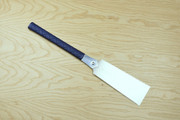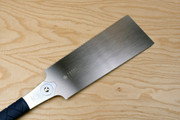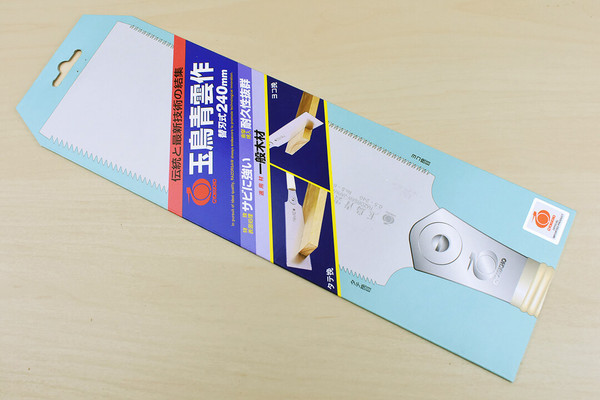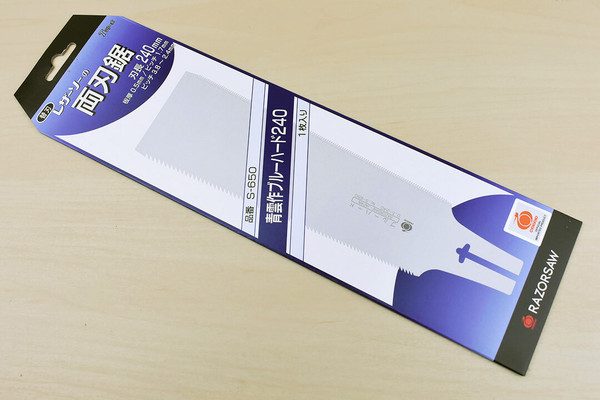Seiun Saku are the standard ryoba for carpentry and joinery work, the angle between the centreline and the toothline is carefully calculated to give a rapid yet smooth cut and the heat treatment is optimised for springiness, i.e. the degree to which the blade can be distorted and still return to its original shape.
| Blade Length | 210mm | 240mm | 240mm fine tooth |
270mm | 300mm |
| Model No. | 660 | 661 | 662 | 663 | 664 |
| Blade Depth | 70 - 87mm | 77 - 97mm | 77 - 97mm | 90 - 115mm | 95 - 120mm |
| Overall Length | 530mm | 560mm | 560mm | 645mm | 680mm |
| Blade Thickness | 0.45mm | 0.5mm | 0.45mm | 0.6mm | 0.7mm |
| Pitch XC | 1.5mm 16.9tpi |
1.7mm 14.9tpi |
1.3mm 19.5tpi |
2.5mm 10.2tpi |
3mm 8.7tpi |
| Pitch Rip | 3.7-2.5mm 6.9-10.2tpi |
3.8-2.4mm 6.7-10.6tpi |
3.8-2.4mm 6.7-10.6tpi |
5.6-3.8mm 4.5-6.7tpi |
5.6-3.5mm 4.5-7.3tpi |
| Set per Side | 0.125mmm | 0.125mm | 0.125mm | 0.125mm | 0.125mm |
| Max Depth | ∞ | ∞ | ∞ | ∞ | ∞ |
| Replacement Blade | S605 | S610 | S611 | S615 | S616 |
| Accepts Blades | S610 S611 S649 S650 S651 |
S605 S611 S649 S650 S651 |
S605 S610 S649 S650 S651 |
S616 S655 |
S615 S655 |
Gyokucho razorsaws, the original replaceable blade Japanese saws, have long been renowned for their cutting efficiency and excellent durability. The latest generation of Gyokucho saws have blue handles made from TPE (thermoplastic elastomer) a remarkable material that is simultaneously hard and resilient yet feels velvety to the touch and affords a superb grip.
The blades of Gyokucho saws are treated using a process called electroless nickel plating, this has three functions. Firstly, it protects the blade against corrosion, secondly it provides a nice shiny mirror surface so you can gauge your cutting angles, and thirdly its low friction properties inhibit resins and sap from building up on the blade - anything that does manage to get stuck to them can easily be washed off with warm soapy water.
The teeth are differentially impulse hardened, one by one, bringing the outer surfaces to RC68 or more whilst still leaving the 'root' of the tooth soft and therefore much less prone to fracture - not unlike tiny Japanese sword blades. They are equally happy working in softwoods or temperate hard woods and can, with care and a light touch, be used on exotic timbers too.
Ryoba are double edged saws (Ryo = Two, Ba = Edge). They have different tooth patterns on either side of the blade, usually one for ripping and the other for crosscutting.

















